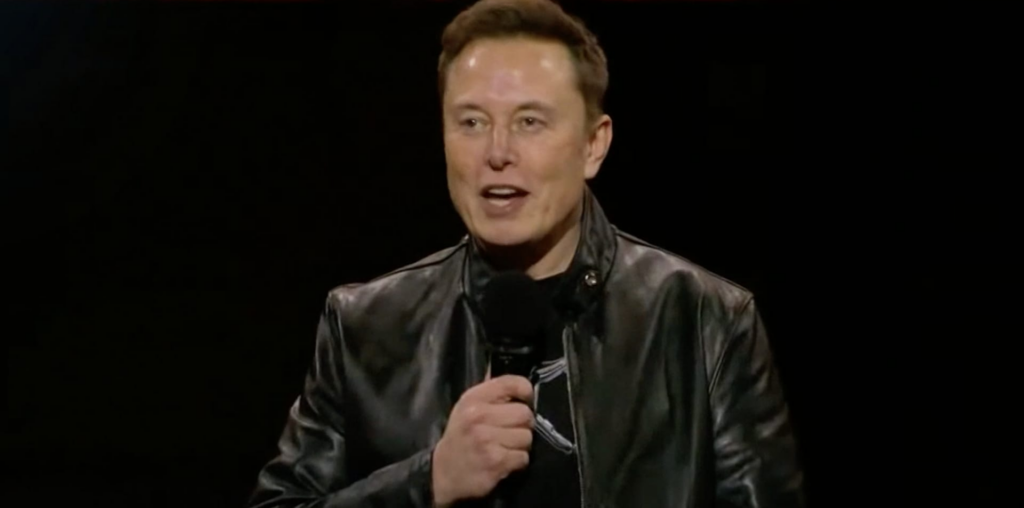Tesla CEO and X owner Elon Musk speaks during an unveiling event for Tesla products in Los Angeles, California, U.S. October 10, 2024
Source: Tesla | Youtube
Tesla reported third-quarter earnings Wednesday that topped analysts’ estimates even as revenue came in just shy of expectations. The stock popped 12% in extended trading.
Here’s what the company reported compared with what Wall Street was expecting, based on a survey of analysts by LSEG:
- Earnings per share: 72 cents, adjusted vs. 58 cents expected
- Revenue: $25.18 billion vs. $25.37 billion expected
Revenue increased 8% in the quarter from $23.35 billion a year earlier. Net income rose to about $2.17 billion, or 62 cents a share, from $1.85 billion, or 53 cents a share, a year ago.
Profit margins were bolstered by $739 million in automotive regulatory credit revenue during the quarter. Automakers are required to obtain a certain amount of regulatory credits each year. If they can’t meet the target, they can purchase credits from companies such as Tesla, which has excess credits because it makes only electric vehicles.
Automotive revenue increased 2% to $20 billion from $19.63 billion in the same period a year earlier and is about flat since late 2022. Energy generation and storage revenue soared 52% to $2.38 billion, while services and other revenue, which includes revenue from non-warranty repairs of Tesla vehicles, jumped 29% to $2.79 billion.
In a shareholder deck, Tesla boasted that on Oct. 22 it reached 7 million vehicles produced, and that its newest offering, the Cybertruck, became the third-best-selling fully electric vehicle in the U.S., behind only the Model 3 and Model Y. Tesla doesn’t break out sales by model.
While Tesla’s angular steel pickup has been plagued with quality issues, the company still sold more than 16,000 Cybertrucks in the U.S. in the third quarter, according to estimates from Kelley Blue Book. Tesla said in the release that the Cybertruck “achieved a positive gross margin for the first time.”
CEO Elon Musk said on the earnings call that his “best guess” is that vehicle growth will reach 20% to 30% next year, due to “lower cost vehicles” and the “advent of autonomy.”
Musk also said Tesla has developed a ride-hailing app that some employees in California have been able to use this year.
“You can request a ride and it’ll take you anywhere in the Bay Area,” he said. “We do have a safety driver for now.”
Musk said he expects the service to roll out for public use next year in California and Texas. The company intends to use it for a robotaxi network in the future.
Tesla isn’t currently licensed to operate a commercial, transportation network company or ride-hailing service in California, according to a list of permits issued on the California Public Utilities Commission’s website.
Earlier this month, Tesla reported third-quarter vehicle deliveries of 462,890. Deliveries are the closest approximation to sales reported by Tesla. The company also said it had produced 469,796 electric vehicles in the period ending Sept. 30.
While deliveries increased 6% from a year earlier, they fell shy of analysts’ expectations and followed two straight quarters of year-over-year declines. Tesla has been offering an array of discounts and incentives to spur sales.
“Despite ongoing macroeconomic conditions, we expect to achieve slight growth in vehicle deliveries in 2024,” the company said in its earnings deck Wednesday. The company also reiterated its goal of “launching” more affordable models in the first half of 2025.
Tesla is facing increased competitive pressure, especially in China, from companies such as BYD and Geely, along with a new generation of automakers, including Li Auto and Nio. In the U.S., legacy automakers Ford and General Motors are starting to sell more electric vehicles, despite walking back prior electrification commitments.

The earnings report comes less than two weeks after a much-anticipated robotaxi event that left shareholders wanting more details, and lands about two weeks before the presidential election, which has occupied a hefty part of Musk’s schedule of late as he campaigns for former President Donald Trump.
According to questions submitted by investors via online platform Say Technologies, a significant number of shareholders want to know how Musk’s pro-Trump activism stands to impact Tesla and its stock price.
Prior to Wednesday’s after-hours pop, the stock was down 18% in October and headed for its worst month since January. For the year, the shares were down 14%, while the Nasdaq is up 22% over that stretch.
Musk has spent tens of millions of dollars to get Trump back into the White House, even though the former president doesn’t support the types of federal spending on EVs, charging infrastructure and environmental regulations that have benefited Tesla for years.
Musk also said at a recent event in Harrisburg, Pennsylvania, that he views many government agencies and regulations in the U.S. as ineffective and unnecessary.


